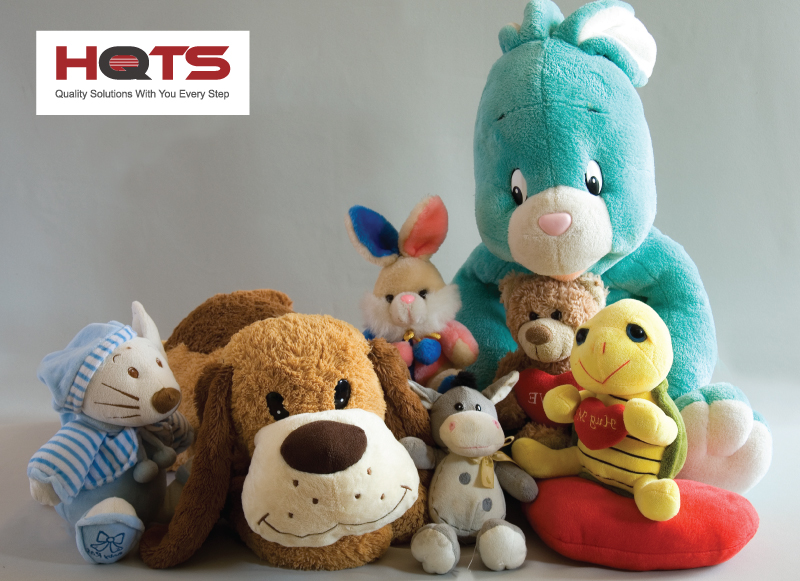The global market and demand for stuffed toys have increased over the years. In 2018, it was valued at USD 7.98 billion and it is anticipated to grow at a CAGR of 7.61% until 2025. While the market is lucrative, it is essential to note that most soft toys are primarily intended to be used by children. Therefore they’re imposed under strict regulations to ensure product quality and safety are upheld within the market.
In this article, you’ll learn about the key safety regulation, requirements needed in the stuffed toy industry and what one of the most common toy safety standards, ASTM F963, contains.
What Are the Most Common Soft Toy Testing Standards?
It’s important to note that there are several regulations stuffed toys must adhere to enter the market. However, different countries have different regulations. For example, the US and Europe have different safety standards for stuffed toys, meaning that any company that imported soft toys must adhere to these standards.
Some examples of applicable regulations for stuffed toys include:
- EN71 – A European standard for toy safety formulated by the European Committee for Standardization (CEN) under the Toys Directive 2009/48/EC.
- ASTM F963 – A toy safety standard by the American Society for Testing and Materials (ASTM)
- CPSIA 2008 – A consumer product safety law from the United States.
- Canada CCPSA Toy Regulation (SOR/2016-188/193/195).
- AS/NZS ISO 8124 – Australian standards for toys.
For this article, we will be covering ASTM 963 as an example. If you’re interested in the European Standard for Toy Safety, you can read our EN 71 certificate article.
What Is the ASTM F963 Toy Safety Standard?
The ASTM F963, also named “The Standard Consumer Safety Specification for Toy Safety,” is a toy safety standard created by the American Society for Testing and Materials (ASTM) that applies to all types of toys entering the United States. This guideline set out by the international standard body states that toys and children’s products must adhere to several chemicals, mechanical, and flammability standards, which are outlined in detail below.
ASTM F963 Mechanical Testing
The ASTM F963 covers mechanical testing that is used to determine a toy’s durability. The mechanical testing put the stuffed toy under harsh conditions. The age rating determines the level of testing it has been given (e.g., 3-5). As well as this, other tests may be implemented, such as washability, material quality checks, and tension/compression tests, to ensure that the products can withstand heavy or rough use. Individual part testing is also an essential function in mechanical testing as if small parts break off of a toy. They can potentially become a severe hazard to children.
ASTM F963 Flammability Testing
The ASTM F963 Flammability Testing method measures the amount of heat released from fabric when exposed to an open flame. It’s not just the fabric that needs to be tested but also the thread, zipper, buttons and other components that may come into contact with an open flame.
All products must be tested for their resistance to burning within this standard. This test is usually done with an open flame to ensure that the products have an acceptable burn rate. If the speed at which it burns is deemed unacceptable, it will not pass.
ASTM F963 Chemical Testing
ASTM F963 Chemical testing is also a key component of the ASTM regulation. This function tests for eight different heavy metals on any surfaces which could be accessible to the mouth. The eight metals which are commonly tested for are;
- Arsenic
- Antimony
- Cadmium
- Barium
- Chromium
- Lead
- Mercury
- Selenium
As well as this, other testing may also be required dependent on the regulation, for example, phthalates, formaldehyde, AZO-Dye testing. This ensures that the products do not have any potentially harmful chemicals, which can cause long-term adverse effects on consumers’ health.
These tests must be done to ensure that the goods comply with the regulations set out. It is important to note that this testing must be completed by a CPSC accepted testing facility (which AQM BD provides) to ensure that the toys comply with the standard.
ASTM F963 Labeling Requirements
As well to the manufacturing process for toy goods that need to be followed, strict stuffed toy labeling guidelines are also in place. Within this act it states that all labels must include:
The Country of Origin
Within this marking, the product’s country of origin must be clearly stated. This must be clearly stated on the container of the product. An example would be if the product was imported from China, it would state “Made In China.” No other specific details would be required, such as location within the country.
Producer Marking
As well as the country of origin, all products that are certified to comply with ASTM regulations must have a visible mark that gives details of the name and address of the producer.
Age Grading
All toys (including stuffed ones) must go under strict testing procedures if they are intended for use by children. Because of this, an age rating (e.g., 3-5+) must be added to the products to represent this.
CPSIA Tracking Label
This requirement states that all manufacturers must produce a tracking label/mark on all products regardless of international or internal export. The code can be placed on the product itself or placed on a separate label, which will be used as the product’s identifier.
Icons for Washing
When adding labels to products, a transparent icon must be added that displays how the toy should be washed or any critical information that may impact its cleaning, such as cold washes.
Are you interested to see a test report? Download our plush toy test report.
Different Regulations for Different Countries
It is important to note that each country has different requirements when it comes to stuffed toy labeling requirements. An example of this would be the addition of the UKCA or EC markings that are needed to be used in products imported to the United Kingdom or the European Union. You must research your country’s requirements to understand better the specific needs required for labelling.
Children’s Product Certificate (CPC)
A CPC or Child Product Licence is required once a CPSC-certified laboratory has successfully inspected a stuffed toy. A CPC license gives a detailed report on the inspection results to ensure they comply with the requirements for the specific toy type.
The CPC must include:
- The safety requirements which are needed for the certificate.
- Origin of the product.
- Manufacturers information.
- A product description.
- Details of the laboratory in which the test was conducted.
Note: a CPC license should be provided with every shipment of the toys. To get more information on CPC, visit the CPSC website.
Conclusion: Soft Toy Safety Regulations: What You Need to Know
Many regulations govern the production of toys and the materials they can be made of — and the standards and regulations vary across countries.
In this article, we have presented some of the most common toy safety regulations relevant to soft toys and outlined the key parts of the ASTM F963. Businesses that want to export or import stuffed toys to new markets often hire third-party quality control companies to help them navigate the regulatory frameworks and test their products.
AQM BD has over 25 years of experience in industry-leading quality control for various industries, including children’s products. We provide rigorous testing from our CPSC accredited testing facility to ensure your goods comply with the chosen regulatory body. To learn more about this, contact us today.





